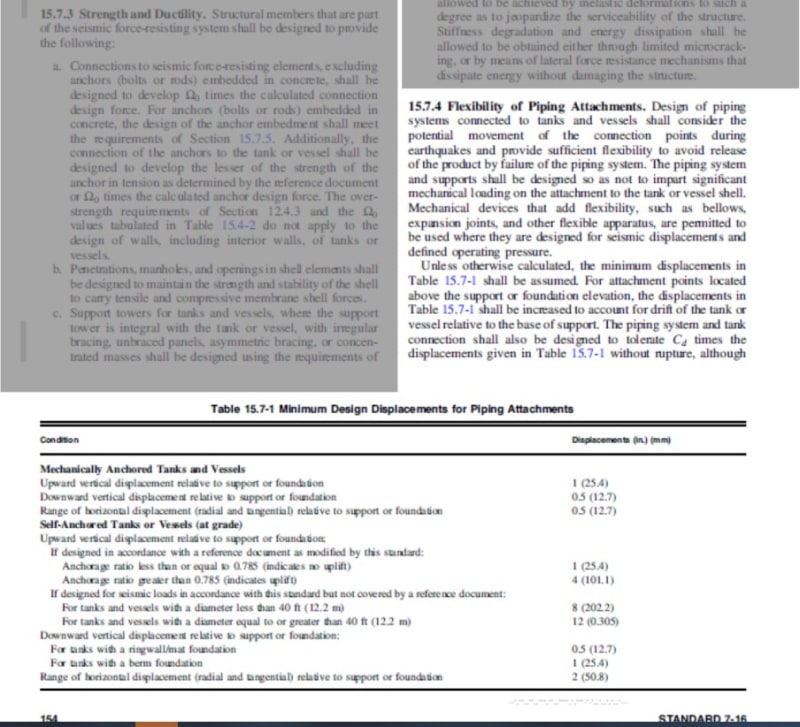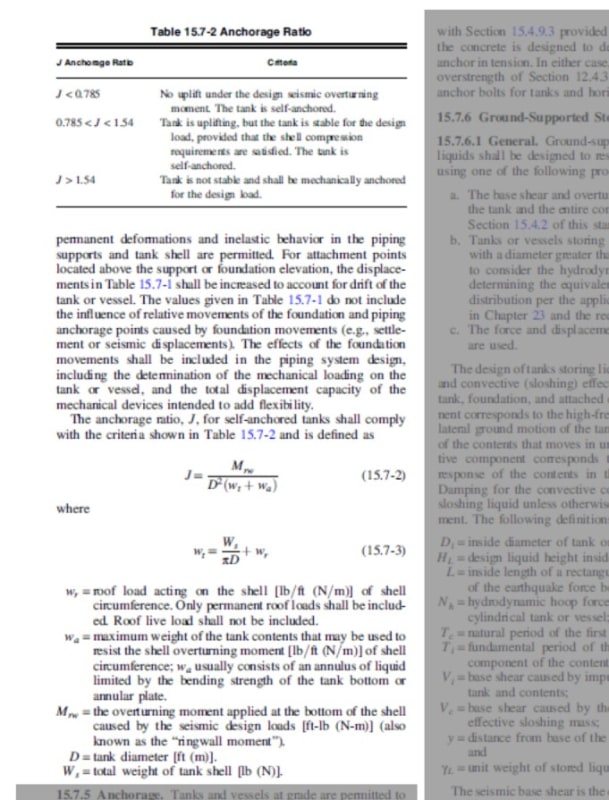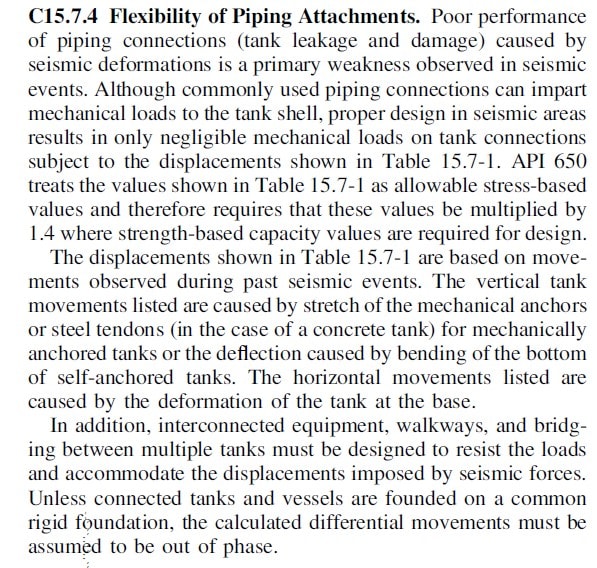JoeSeag
Mechanical
- Jan 24, 2024
- 12
I'm trying to get a feel for what those in the oil & gas/chemical/industrial industries are doing in terms of pipe stress performed on piping connected to pressure vessels and exchangers. If you read ASCE 7, it is clear to me that the intent that piping attachments to all these pieces of equipment shall be analyzed to handle the movements in table 15.7-1 times Cd. This is very similar to API 650 Annex E seismic analysis. However, outside of API 650 Annex E tanks, is anyone running this 15.7.4 flexibility analysis on standard pressure vessels, exchangers, etc?



![[thumbsdown] [thumbsdown] [thumbsdown]](/data/assets/smilies/thumbsdown.gif) ) is that the allowable can become way too high.
) is that the allowable can become way too high.